Question 1
The following is an illustration of a certain process that occurs in mammals.
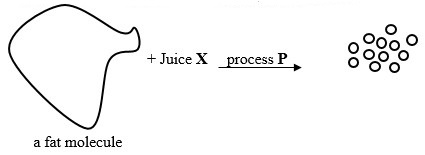
- Name process P.
- Name the juice involved in the process P
- List two Salts found in the juice name in (b) above that aids in process P
- Give a reason why liver damage leads to impaired digestion of fats
- What would be the likely effect on digestion if the small intestine of a human is reduced in an operation
Answer
- Emulsification.
- Bile juice
- sodium taurocholate
sodium glycocholate - Bile is produced in the liver
- Surface area of digestion would be reduced hence the rate of digestion
Absorption process would be reduced
Question 2.
The diagrams below shows samples of blood obtained from two different persons A and B.
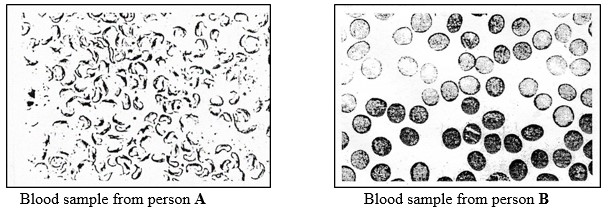
- What genetic disorder is person B suffering from?
- State one advantage and one disadvantage of the disorder in (a) above.
- Work out the genotypes and phenotypes of the resulting offspring's of marriage between Person A and person B
Answer
- Sickle cell anemia
- Advantage - individual having this condition rarely suffer from malaria
Disadvantage- suffocation due to insufficient supply of oxygen to the (respiring) body. - Parental phenotypes Person A Person B
Parental Genotype HbA HbA X HbS HbS
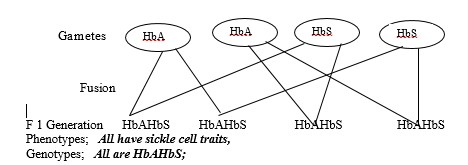
Question 3
The diagram below shows three different types of neurons along a reflex arc
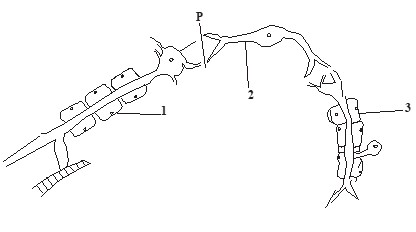
- What is a reflex arc?
- Identify the neutrons labeled 1 and 2.
- Using arrows show, the direction of impulse transmission on the diagram.
- Name the part of the spinal cord where the cell bodies of neurons 1 and 2 are located.
- Describe the transmission of impulse across the part labeled P.
Answer
- Pathway followed by a nerve impulse that gives rise to a reflex action.
- 1 - motor neuron
2 - relay neuron/intermediate neuron. -
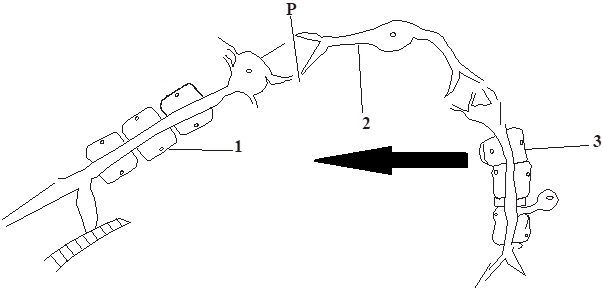
- Grey matter
- Impulse reaching the dendrite end of relay neuron causes the synaptic vesicles to release a acetylcholine/transmitter substance; into the synaptic cleft, the acetylcholine/transmitter chemical diffuses across the cleft; and causes the depolarization of the neuron.
Question 4
During an ecological study of a grassland ecosystem, a group of students recorded the following observations.
- Grasshoppers feed on grass
- Guinea fowls feed on grasshoppers, termites.
- Vultures feed on guinea fowls and leopards
- Termites feed on grass
- Gazelles feed on grass
- From this record of observations construct a food web.
- Write down, the food chains in which the guinea fowls are secondary consumers.
- Name the organisms through which energy from the sun enters the food web.
- Name the organism that has the least biomass in the food web.
Answer
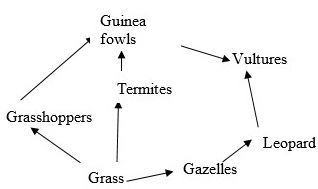
- Grass → Grasshoppers → Guinea fowls;
Grass → Termites → Guineas Fowls; - Grass
- Vultures
Question 5
Below is a chemical equation, study it and answer the questions that follow:-

- Name process A and B
- What is the biological significance of process A
- In which organelle does process A and B take place
- Name two stages of process B
Answer
- A - Photosynthesis
B - Respiration - Provision of food to plants organisms when convert light energy into chemical energy to make their own food which is later consumed by animals.
- A -chloroplast
B -Mitochondrion - - Glycolysis
- Krebs's cycle
